From inside (document excerpt):
User and Operator’s Vehicle Manual for 2001 Hyundai Grandeur XG300. Model type’s specification: 3.0 V6 6-Cylinder V-type, DOHC. Fuel recommendations: Use Unleaded Gasoline Unleaded gasoline with a Pump Octane Rating of 87 (Research Octane Number 91) or higher must be used in your Hyundai.
Free PDF Auto Service and Owner’s Manual Download.
Table of contents
1. FEATURES OF YOUR HYUNDAI. 1-1 1
2. DRIVING YOUR HYUNDAI. 2-1 2
3. WHAT TO DO IN AN EMERGENCY. 3-1 3
4. CORROSION PREVENTION & APPEARANCE CARE. 4-1 4
5. VEHICLE MAINTENANCE REQUIREMENTS. 5-1 5
6. DO-IT-YOURSELF MAINTENANCE. 6-1 6
7. EMISSION CONTROL SYSTEMS. 7-1 7
8. CONSUMER INFORMATION & REPORTING SAFETY DEFECTS. 8-1 8
9. VEHICLE SPECIFICATIONS. 9-1 9
10. INDEX. 10-1 10
1. FEATURES OF YOUR HYUNDAI
INDEX
A
Air bag. 1-21
Air Cleaner Filter. 6-6
Air Conditioning
Care. 6-9
Operation. 1-54
Switch. 1-54
Antenna. 1-81
Ashtray. 1-37
Automatic Heating and Cooling Control System.1-56 ~1-59
Audio Fault Code. 1-78
B
Battery. 2-9, 6-12
Bi-Level Heating. 1-52
Brake
Anti-lock system. 2-6
Checking the brakes. 6-8
Fluid. 6-8
Pedal clearance. 6-10
Pedal free-play. 6-10
Practices.2-7
Breaking-In your New Hyundai. 1-2
Bulbs Wattage. 6-16
C
Care of Cassette Tapes. 1-79 Care of Disc. 1-79 Car Mat Anchor. 1-47 Cassette Tape Player Operation (H940A). 1-65 ~ 1-66 Catalytic Converter. 7-2 Child Restraint System. 1-17 Child-Protector Rear Door Lock. 1-4 Cigarette Lighter. 1-37 Clock. 1-35 Combination Light
Auto light. 1-33 Headlight flasher. 1-33 Headlight switch. 1-32 High-beam switch. 1-33 Lane change signal. 1-32 Turn signal operation. 1-32 Compact Disc Player Operation (H940A). 1-67 ~ 1-68 Compact Disc Player Operation (H940C). 1-74 ~ 1-75 Consumer Information. 8-4 Cooling Fans. 6-12 Corrosion protection
Cleaning the interior. 4-3 Protecting your Hyundai from corrosion. 4-1
Washing and waxing. 4-2 10
CD Auto Changer. 1-47, 1-69 ~ 1-70, 1-76 ~ 1-77
Cruise Control. 1-48 ~ 1-50
D
Defrosting/Defogging. 1-53 Door
Door locks. 1-3 Front door edge warning light. 1-50 Locking, unlocking front door with a key. 1-3 Drink Holder. 1-38 Drive Belts. 6-10 Driving
Economical driving. 2-8 Smooth cornering. 2-9 Winter driving. 2-9
E
Emission Control System. 7-1 Engine
Before starting the engine. 2-2
Compartment (3.0 V6). 6-1
Coolant. 6-4
Coolant temperature gauge. 1-30
If the engine overheats. 3-2
Number. 8-1
Oil. 6-2
Starting. 2-3
Engine Exhaust Can Be Dangerous. 2-1
F
Fan Speed Control. 1-51 Fog Light
Front. 1-32 Front Seats
Adjustable front seats. 1-7 Adjustable headrests. 1-8 Adjusting seat forward and rearward. 1-7 Lumbar support control. 1-8 Adjusting seatback angle. 1-7 Seat cushion height adjustment. 1-9 Fuel
Capacity. 9-1 Gauge. 1-30 Unleaded gasoline. 1-1 Fuel Filler Lid
Remote release. 1-45 Fuses. 6-11
G
General Checks. 6-1
Glove Box. 1-41
H
Hazard Warning System. 1-34
Headlight. 1-32, 6-13
Headlight Aiming Adjustment. 6-14
Heating and Ventilation
Air flow control. 1-51 Air intake control. 1-51 Bi-level heating. 1-52 Fan speed control. 1-51 Rotary and Push button type. 1-50 Temperature control. 1-52 High-Mounted Rear Stoplight. 1-45 Hood Release. 1-46 Horn. 1-48 J
Jump Starting. 3-1
K
Key. 1-2
If you lose your keys. 3-9
Positions. 2-2
L
Light Bulbs Replacement. 6-13
Lubrication Chart. 9-3
I
Ignition Switch. 2-2 Illuminated lgnition Switch. 1-3 I.M.S (lntergrated Memory System). 1-10 Instrument Cluster and Indicator Lights. 1-27 Instrument Panel Light Control (Rheostat). 1-37 Instruments and Controls. 1-26 lnterior Light
Interior light. 1-40 Map light. 1-40 Personal light. 1-40 Intermittent Wiper. 1-34 M
Maintenance Intervals
Explanation of scheduled maintenance items. 5-6
Maintenance under severe usage conditions. 5-5
Scheduled maintenance. 5-3
Service requirements. 5-1
Mirrors
Day-night inside rearview. 1-42 ~1-43
Outside rear view. 1-41
O
Odometer. 1-31 P
Parking Brake. 1-43 Passenger Presence Detection.1-23 Power Steering Fluid Level. 6-13 Per-tensioner Seat Belt. 1-19 Steering Wheel Tilt Lever. 1-48 Stereo Radio Operation (H940A). 1-62 ~ 1-64 Stereo Radio Operation (H940C). 1-71 ~ 1-73 Stereo Sound System. 1-59 ~ 1-61 Sun Visor. 1-47 Sunroof. 1-38
R
Rear Seat
Fold down. 1-11
Rear Window Defroster Switch. 1-35
Reporting Safety Defects. 8-6
S
Seat
Front. 1-7
Seat Warmer. 1-11
Seat Belts
3-Point system. 1-14
Adjusting your seat belt. 1-15
Care of seat belts. 1-13
Precautions. 1-12
Shop Manual. 8-4
Spark Plugs. 6-5
Speedometer. 1-31
Starting Procedure. 2-3
Steering Wheel
Free play. 6-9
T
Tachometer. 1-31 Theft-Alarm system. 1-5 Tires
Balancing. 8-3 Chains. 8-2 Changing a flat tire. 3-4 If you have a flat tire. 3-3 Information. 8-1 Pressure. 8-1 Replacement. 8-3 Rotation. 8-2 Snow tires. 8-2 Spare tire. 3-3 Traction. 8-3 Towing
A trailer (or vehicle). 2-10 Emergency. 3-8 If your car must be towed. 3-7 Traction Control System. 2-6 Transaxle
Automatic. 2-3
Automatic transaxle fluid checking. 6-7
Trip Odometer. 1-31
Trunk Lid. 1-43
V
Vehicle Identification Number. 8-1
W
Warning Lights. 1-28 ~ 1-31
Power Windows.1-6
Windshield Wiper and Washer. 1-33
Windshield Wiper Blades. 6-6
Wikipedia’s page for Hyundai Grandeur XG300
Publisher: Hyundai Motor America


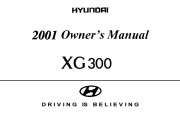 2001 Hyundai Grandeur XG300 3.0L Owners Manual, 2001 - Enlarge page 1 of 156
2001 Hyundai Grandeur XG300 3.0L Owners Manual, 2001 - Enlarge page 1 of 156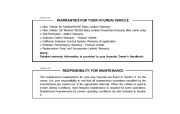 2 of 156
2 of 156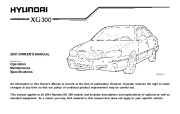 3 of 156
3 of 156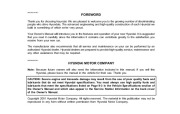 4 of 156
4 of 156 5 of 156
5 of 156 6 of 156
6 of 156 7 of 156
7 of 156 8 of 156
8 of 156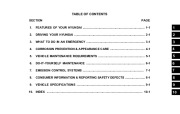 9 of 156
9 of 156 10 of 156
10 of 156 11 of 156
11 of 156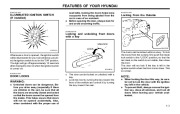 12 of 156
12 of 156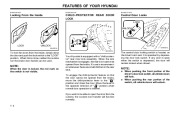 13 of 156
13 of 156 14 of 156
14 of 156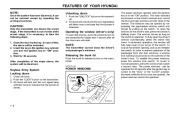 15 of 156
15 of 156 16 of 156
16 of 156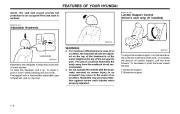 17 of 156
17 of 156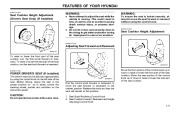 18 of 156
18 of 156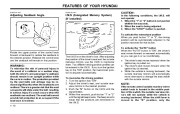 19 of 156
19 of 156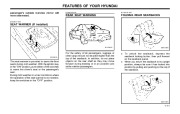 20 of 156
20 of 156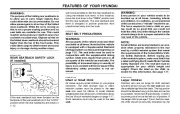 21 of 156
21 of 156 22 of 156
22 of 156 23 of 156
23 of 156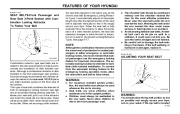 24 of 156
24 of 156 25 of 156
25 of 156 26 of 156
26 of 156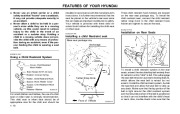 27 of 156
27 of 156 28 of 156
28 of 156 29 of 156
29 of 156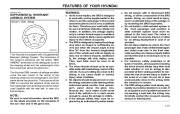 30 of 156
30 of 156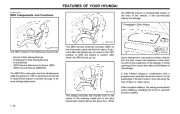 31 of 156
31 of 156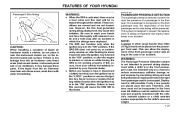 32 of 156
32 of 156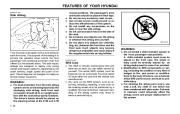 33 of 156
33 of 156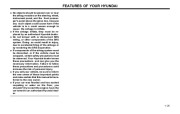 34 of 156
34 of 156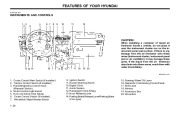 35 of 156
35 of 156 36 of 156
36 of 156 37 of 156
37 of 156 38 of 156
38 of 156 39 of 156
39 of 156 40 of 156
40 of 156 41 of 156
41 of 156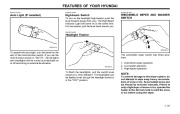 42 of 156
42 of 156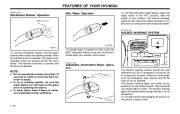 43 of 156
43 of 156 44 of 156
44 of 156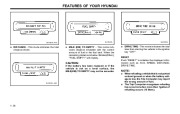 45 of 156
45 of 156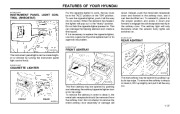 46 of 156
46 of 156 47 of 156
47 of 156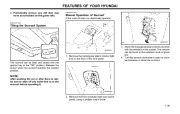 48 of 156
48 of 156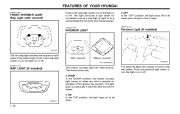 49 of 156
49 of 156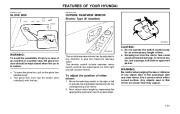 50 of 156
50 of 156